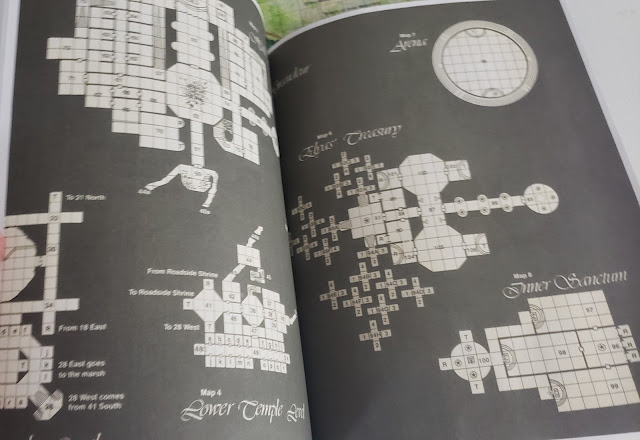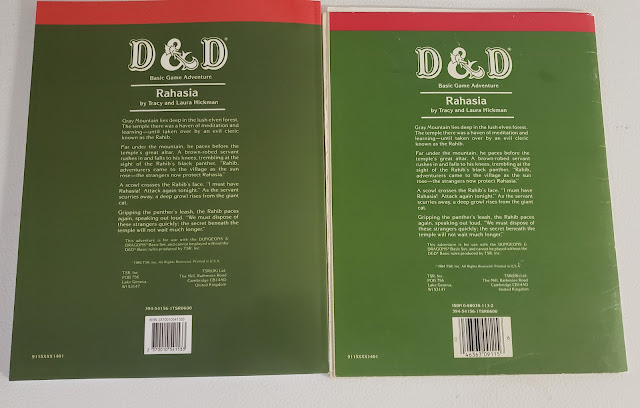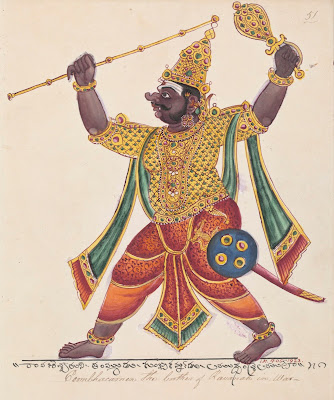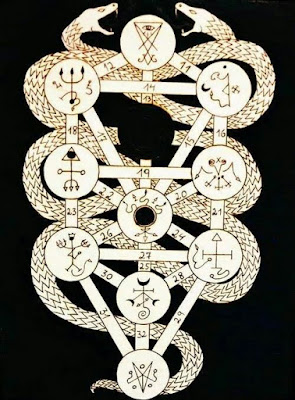One of the things I want to establish in my Basic Bestiary II is there are a LOT of different kinds of "demons" out there. In AD&D we basically had two, then three, major groups, demons (chaotic evil), devils (lawful evil), and the awkwardly named daemons (neutral evil). When 2nd ed came around the publisher caved to the angry mom crowd the authors came up with the replacements Tanar'ri, Baatezu, and Yugoloths respectively. While many of us chaffed under these names they did open all the fiends up to reinterpretation. And that was a good thing. Also, I preferred Yugoloths over Daemons anyway.
As the editions continued on the "Species" of fiends also grew. The official D&D products in the 3e era added the Obyriths and Loumara types of demons to represent to oldest and youngest races respectively (not subject to the OGL) and other companies began to add their own as well.
I myself have added the Lilim, Eodemon, Shedim, Baalserph, and Calabim fiends. I have a few more as well. Personally, I like the idea of all these competing hordes of fiendish creatures, fighting each other as much as they want to fight the power of good.
Some of the newer types are not included in the SRD or part of the OGL. For example, I can't use Obyriths in my books. I can use Pazuzu who is described as an Obyrith, I just can say anything about his "species." I do say he is an "Eodemon" or "Dawn Demon" which is what the obyrtihs are trying to do. Pazuzu is from world mythology so he is fair game. Pale Night, a very powerful obyrtih is not.
This brings me to the Qliphoth. The Qliphoth is open in terms of the Open Gaming License. The term, קְלִיפּוֹת, itself comes from Jewish Kabbalah. So I am free to use that. The Qliphoth in Pathfinder have a particular background. I want something a little different, though I am likely to keep them similar just to aid people moving from system to system. Rereading "Eodemon" as "Obyrith" is no big deal. Having a name refer to two completely different sets of creatures is something else.
Borrowing from the Kabbalah where Qliphoth means "Peels", "Shells" or "Husks" (mostly husks) here is what I am saying the Qliphoth are.
Qliphoth
Æons before the first demons crawled out of the Primordial Chaos or the first Angel fell to become a Baalseraph there was a race of beings of surpassing knowledge, grace, and power. Akin to gods they were and like gods they wished to be. Not for power or glory, but for the purpose of knowing the fundamental workings of the cosmos to become one with it. Their success was gained when they came upon a plan to shed all that was impure, unholy, and evil in their natures and discard them. They sluffed off this evil and became luminous beings of pure energy and light. Leaving behind the husks of what they were, tainted with unspeakable evils as only an immortal race of super-beings can produce. These husks began of a "life" of their own. Evil, knowing they had been discarded, and festering in the darkest parts of Chaos. It took them millennia, and in that time other creatures had come to populate the sinkholes of evil they had called their prison and home. They despised these creatures as much as they despised their former selves and their new selves. The Qliphoth had been born.
Qliphoth inhabits the same areas that are inhabited by the Calabim, demons of destruction, the chaotic demons that call the Primordial Chaotic abysses their home. They share some qualities, immune to poison, possessing telepathy, and darkvision. Like other demons, they take only half damage from electricity and fire, but also acid. Their minds are so alien to humanoids that they are resistant to any mind-affecting magics like sleep, charm, and hold spells. All Qliphoth are the stuff of nightmares and only vaguely resemble something the human mind can process, so a save vs. Petrify or Paralysis is required when they are first seen. If the subject fails they cannot attack for 1d4 rounds.
It is said that Qliphoth exists for one reason alone, to reunite with the begins that cast them off. Each subtype of Qliphoth is connected to a particular individual. If they can reunite then all of that type will cease to be. Otherwise, they will attempt to kill and devour the being that abandoned them. Until such time they will kill and devour anything else in their path of destruction.
The Qliphoth are named for the part of the Tree of Death they are said to have originated in.
Nehemoth. These are whisperers or the night specters. They are the weakest of the qliphoth having only spirit forms.
Gamaliel. These are the "obscene ones" and appear as nightmarish distortions of human figures with exceptionally large and exaggerated sexual organs. They were the unnatural sexual urges cast off by the Luminous Ones.
Samael. These Qliphoh appear as beautiful humans but all their words are lies. They drip poison and are a horror to behold in their true form which takes the shape of nightmares.
A'arab Zaraq. These are the Ravens of Dispersion. They appear as hideous demon-headed ravens with wings of molten lava.
Tharirion. These are are the Zomiel, giant demons coated in dark black blood that burns to the touch. They constantly fight amonst themselves unless ordered by a stronger creature.
Golachab. These creatures are demons surrounded by fire. They constantly burn the exist only to cause destruction and pain.
Gha'agsheblah. These creatures are giants with the heads of demonic cats. They eat everything they can.
Sathariel. These creatures are heads surrounded by swirling black mists. Only their glowing red eyes can be seen. Their riddles cause madness.
Ghagiel. Huge demons with serpents wound around them. They are found of destroying libraries and other institutions of learning and wisdom.
Thaumiel. The most powerful of the Qliphoth. The shadow of their former selves. Appears as a towering beast of shadow and destructive purpose.
--
Ok. No stat block on this one yes because I am not far enough along yet to merit one. Plus I need to get these demons to really be scary. Right now they are not. And I'll need to read some more Kabbalah to get a good feel about what these creatures do and how to tease them apart from other types of demons.
I have some time. This is just the first draft of these guys.















